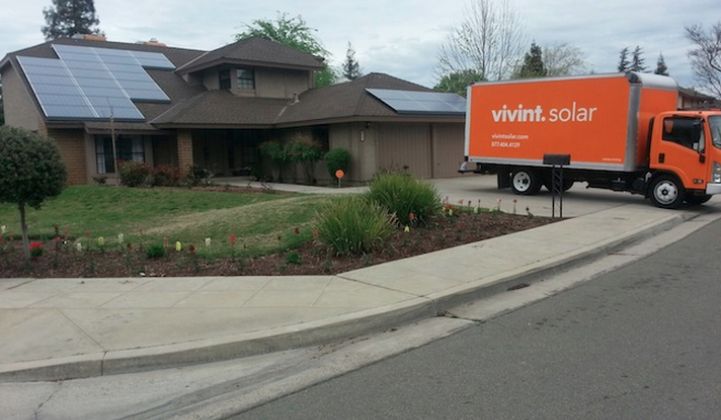Vivint Solar was expecting aggressive expansion in Nevada starting in July. The company leased a warehouse in Las Vegas and hired more than 30 salespeople, some of who relocated for the position.
Two weeks later, Vivint had closed up shop in Nevada. The company, along with other solar installers, believed that the cap of 235 megawatts for residential solar projects eligible for net metering would not expire until early 2016.
The net metering cap was put in place in late May by the state legislature, after a bitter fight between the solar industry and the local utility, NV Energy. The temporary fix was meant to maintain the status quo while allowing for the state’s public utility commission to craft a new solar policy.
“It’s clear the intent was that, until the public utility commission had a chance to do their full docket of net metering 2.0, the legislature wanted to make sure people aren’t kept from installing solar,” said Dan Black, general counsel to Vivint Solar.
Based on data from NV Energy at the time of that proceeding, the utility was less than halfway to the cap of 235 megawatts, according to Black. Given the headroom, Vivint believed there was substantial opportunity, no matter what happened with the upcoming net-metering debate and subsequent policy from the PUC.
“We were more excited than ever to go into Nevada,” said Chance Allred, VP of sales for Vivint. Shortly thereafter, however, NV Energy told solar installers the cap would be hit by the end of the month, even though the utility was supposedly only halfway there when the legislative fix was enacted in late May, according to Vivint. Residential solar in Nevada came to a grinding halt.
NV Energy told installers there were nearly 20 megawatts on its system that hadn’t previously been accounted for. But even those additional 20 megawatts don’t quite explain how the cap was met so quickly, according to Black.
“Many of the public conversations don’t ring true from our perspective,” he added. “There’s something funny happening here.”
Vivint now says it does not know when it will be back in Nevada. The Alliance for Solar Choice (TASC), the industry association that counts as members many of the installers already active in the state, has filed a petition with the public utility commission to confirm whether the net-metering program will continue until the PUC decides on a new policy.
NV Energy, however, has filed an application for a new net-metering policy that would include a basic service charge, a demand charge and an energy charge. The PUC has a hearing on Friday to consider NV Energy’s application for a cost-of-service study for net metering. Installers are hoping that the PUC will rule after this hearing to keep the existing net-metering regime in place until a new policy is enacted.
But given NV Energy’s proposal for a new net-metering policy, installers, including Vivint, are not hopeful.
“The net-metering proposal would be one of the worst in the country,” said Allred.
"NV Energy’s proposal would mean the certain end of Nevada’s rooftop solar industry, which is No. 1 in the nation in solar jobs per capita,” Will Craven, spokesperson for TASC, recently told Greentech Media’s Julia Pyper.
NV Energy, however, sees its proposal as a path forward that will not kill solar jobs. "Despite what has been widely reported, NV Energy has no desire to impact jobs at a time when the state's economy needs them,” Paul Caudill, NV Energy president and CEO, said in a statement.
In the short term, however, the ongoing dispute is affecting jobs. “We don’t think everything is going to be fine,” said Allred, “and we’ve completely shut down our operations.”



